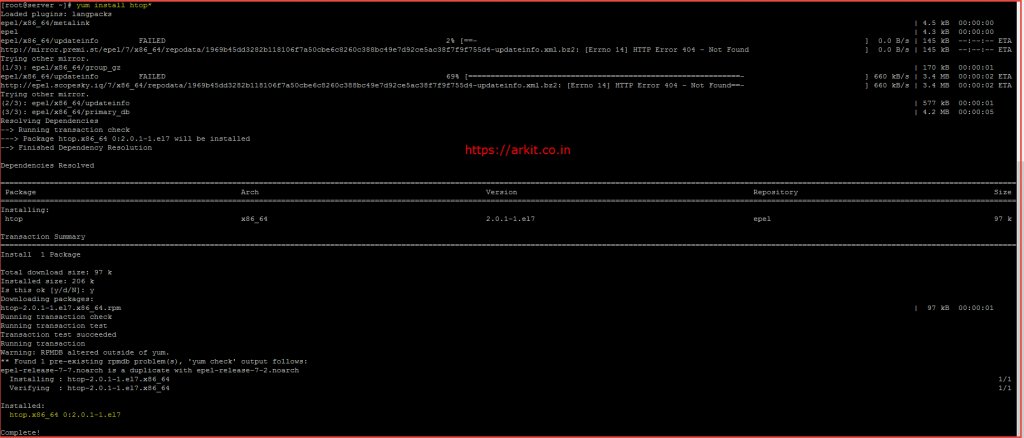

Many VPS users will install Webpanels such as CentOS Web Panel, VestaCP, and Virtualmin to manage their server via the web browser and SSH to the server accessing the command line. Htop is customizable, which means you can change what is displayed and customize it to your needs. One of the nice things about Htop is that it accomplishes the goal of many command-line tools already within Linux. Items such as CPU load, Memory usage overall, swap usage, tasks running, load averages, system uptime, and currently running processes. Essentially it is a dashboard that combines several different Linux commands to represent them in groups within this dashboard. Htop is a command-line interface to check and monitor your server's performance. CentOS Install HTOP command-line performance monitoring This guide will go over using htop on a Hostwinds Cloud VPS server running CentOS. htop provides you with an interactive way to monitor your processes for your server and can be used with any Hostwinds Cloud VPS server. Htop was forked by several developers as htop-dev, and with support from the original author, the homepage was later redirected to a new domain.With any Linux-based from Hostwinds, there may be a need to monitor your processes. Solaris/Illumos/OpenIndiana support added in 2.2.0. Cross-platform, OpenBSD, FreeBSD and Mac OS X, support was added in htop 2.0. īecause system monitoring interfaces are not standardized among Unix-like operating systems, much of htop's code must be rewritten for each operating system. Its name is derived from the original author's first name, as a nod to pinfo, an info-replacement program that does the same. Htop is written in the C programming language using the ncurses library. Compared to top, it provides a more convenient, visual, cursor-controlled interface for sending signals to processes. htop is also popularly used interactively as a system monitor. Users often deploy htop in cases where Unix top does not provide enough information about the system's processes. htop can also display the processes as a tree.

htop uses color and gives visual information about processor, swap and memory status.

Unlike top, htop provides a full list of processes running, instead of the top resource-consuming processes.

It shows a frequently updated list of the processes running on a computer, normally ordered by the amount of CPU usage. It is designed as an alternative to the Unix program top. Htop is an interactive system-monitor process-viewer and process-manager. Linux, macOS, FreeBSD, OpenBSD, Solaris, Illumos, OpenIndiana


 0 kommentar(er)
0 kommentar(er)
